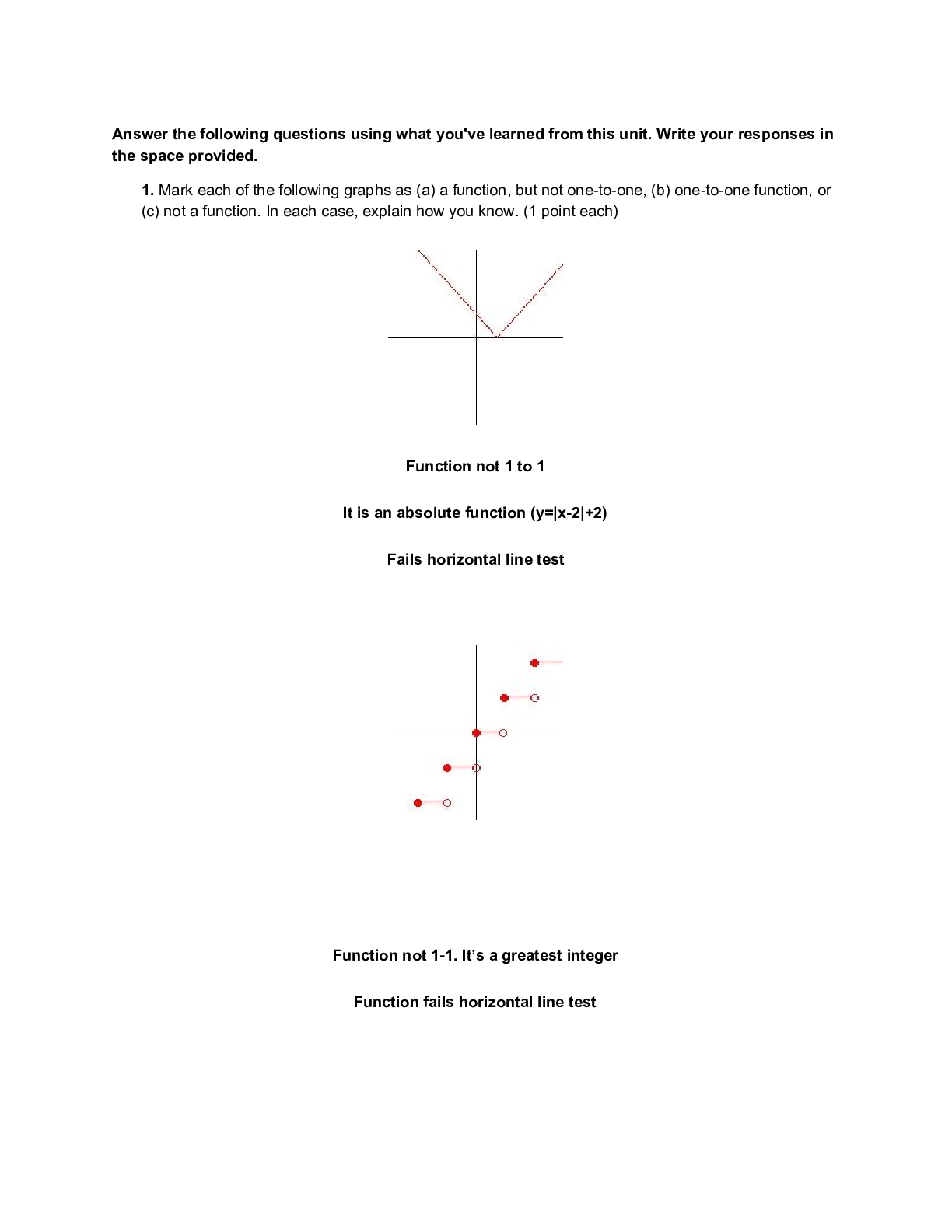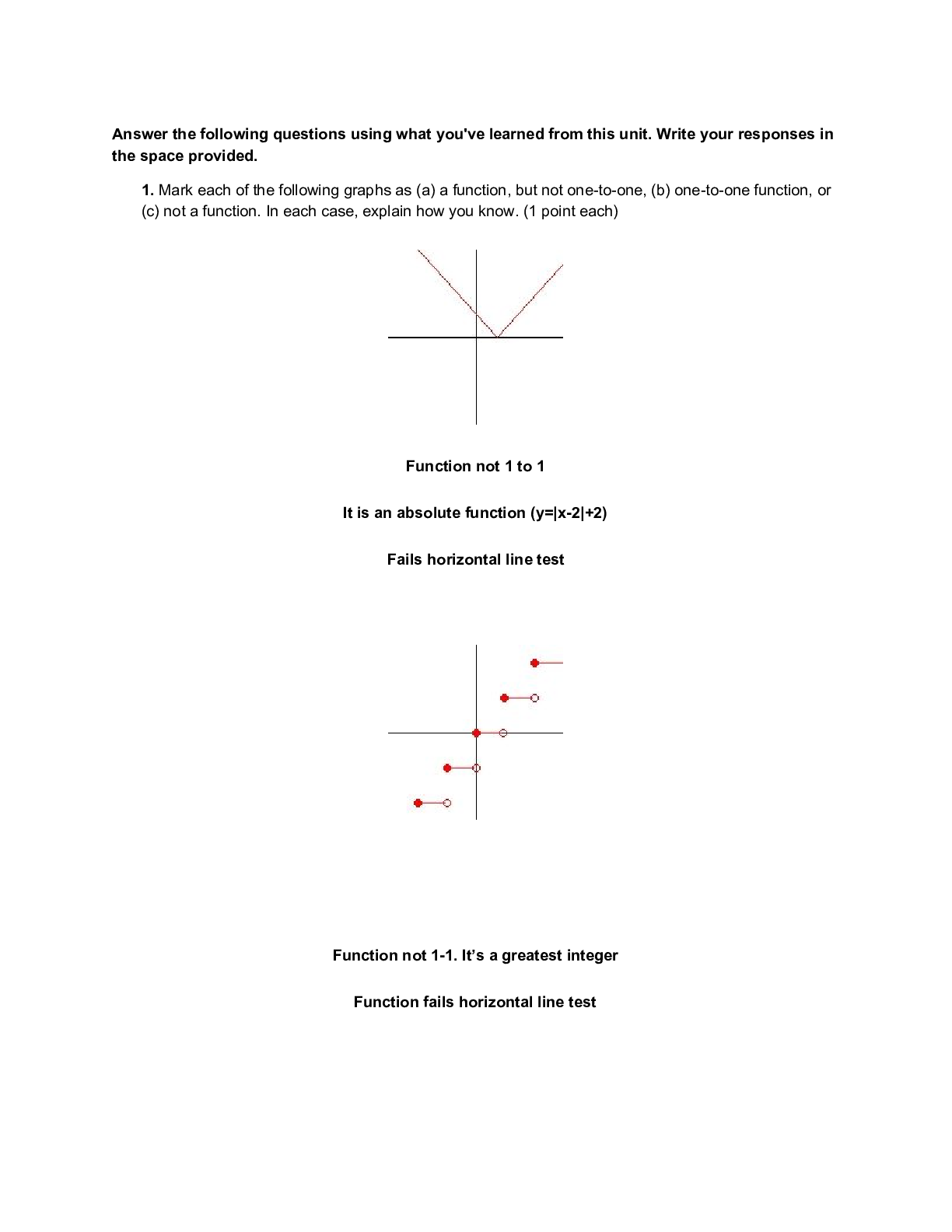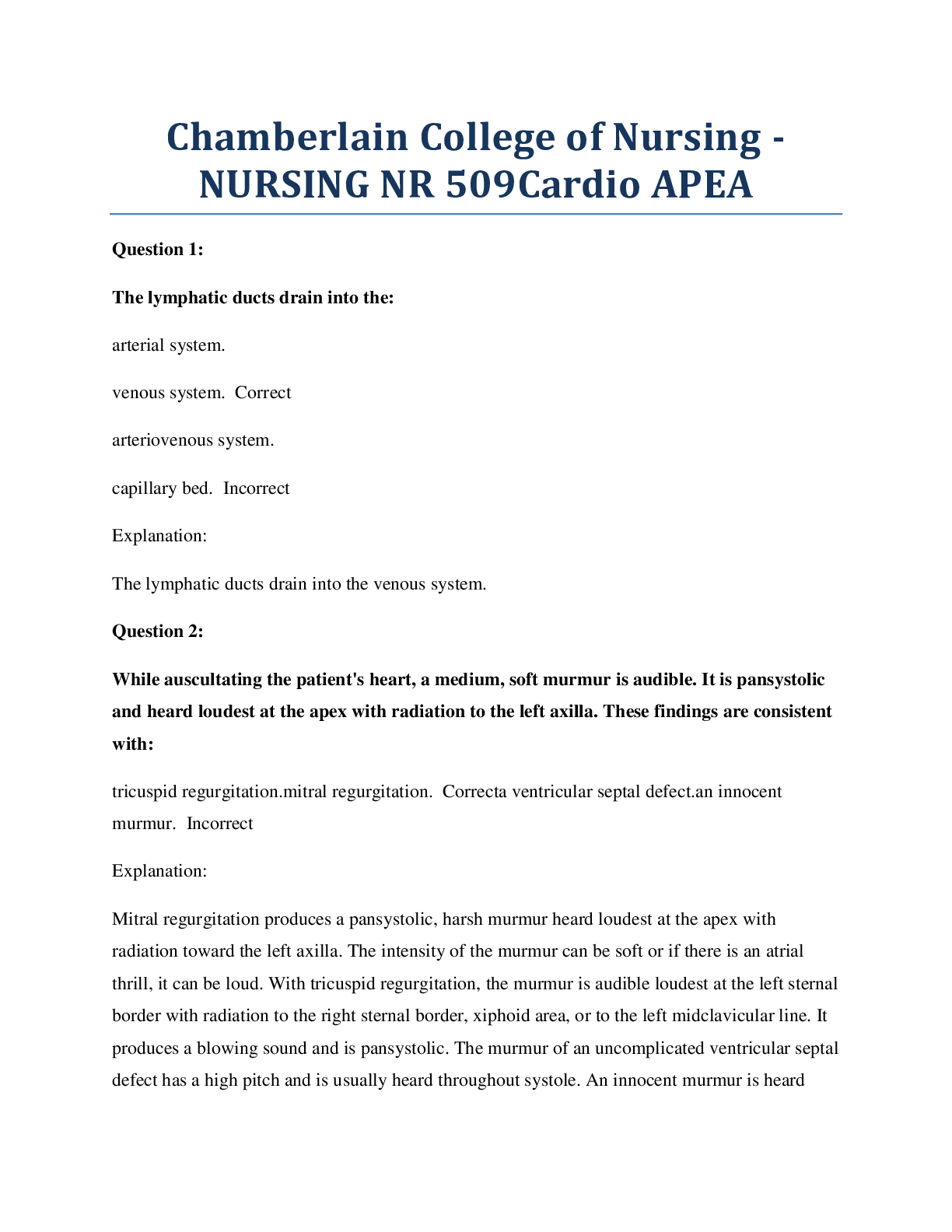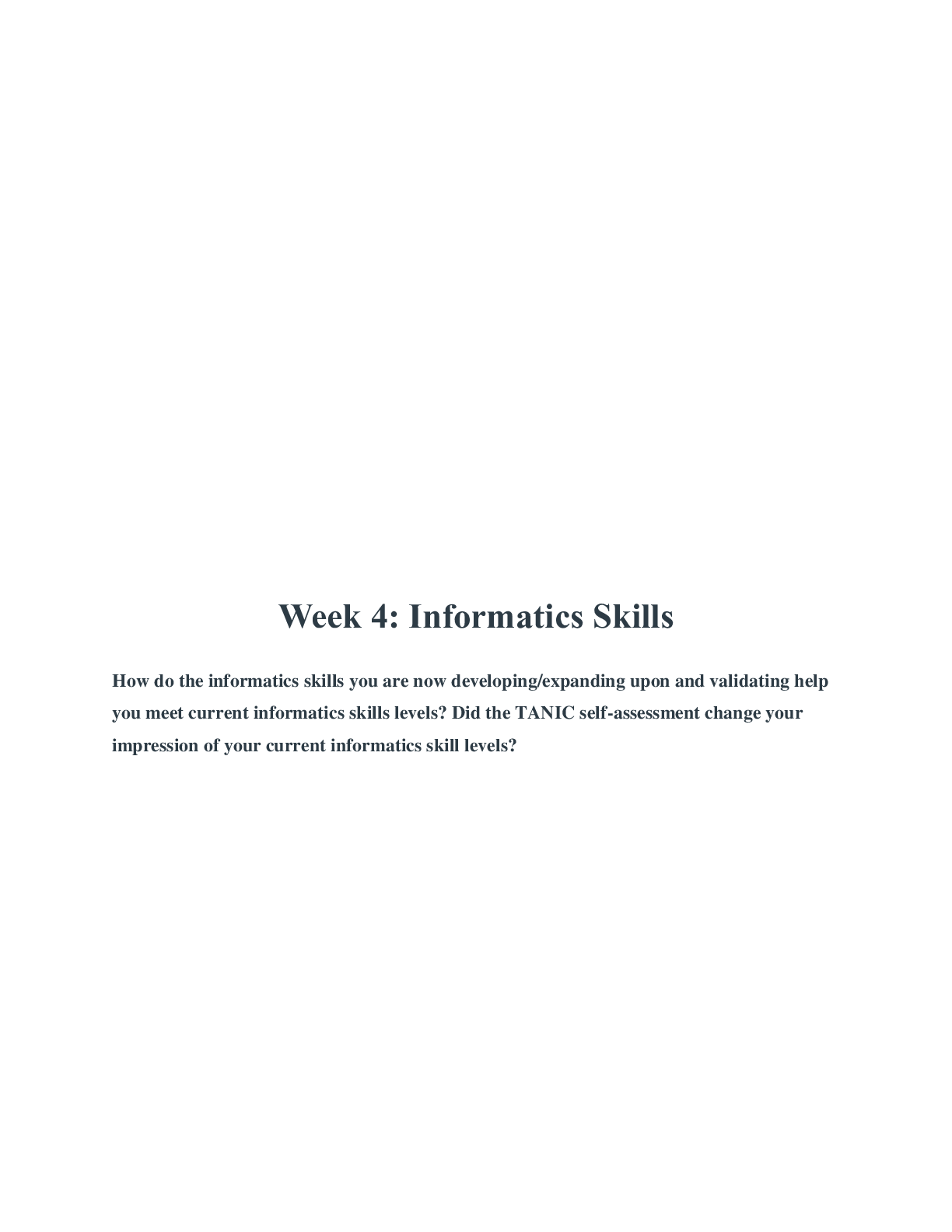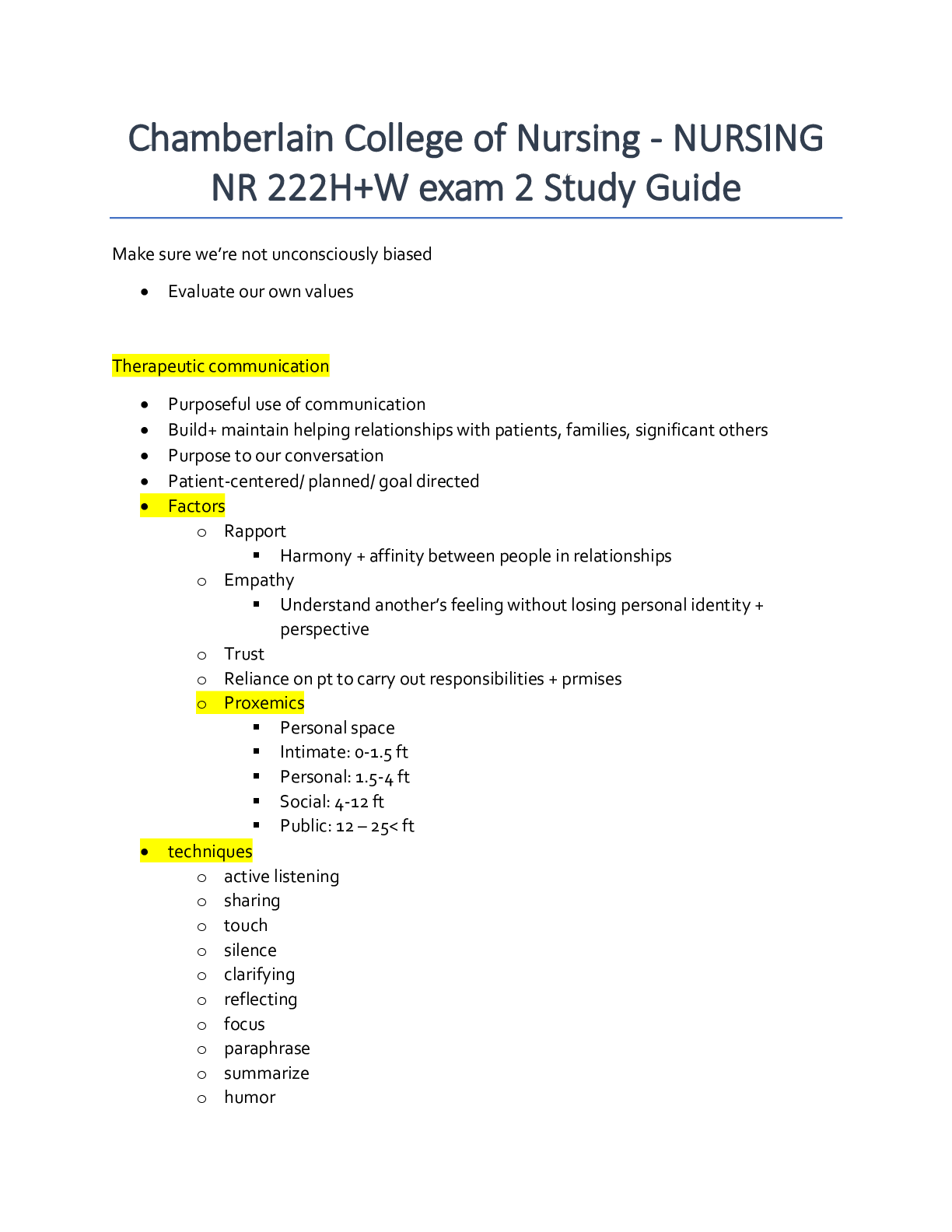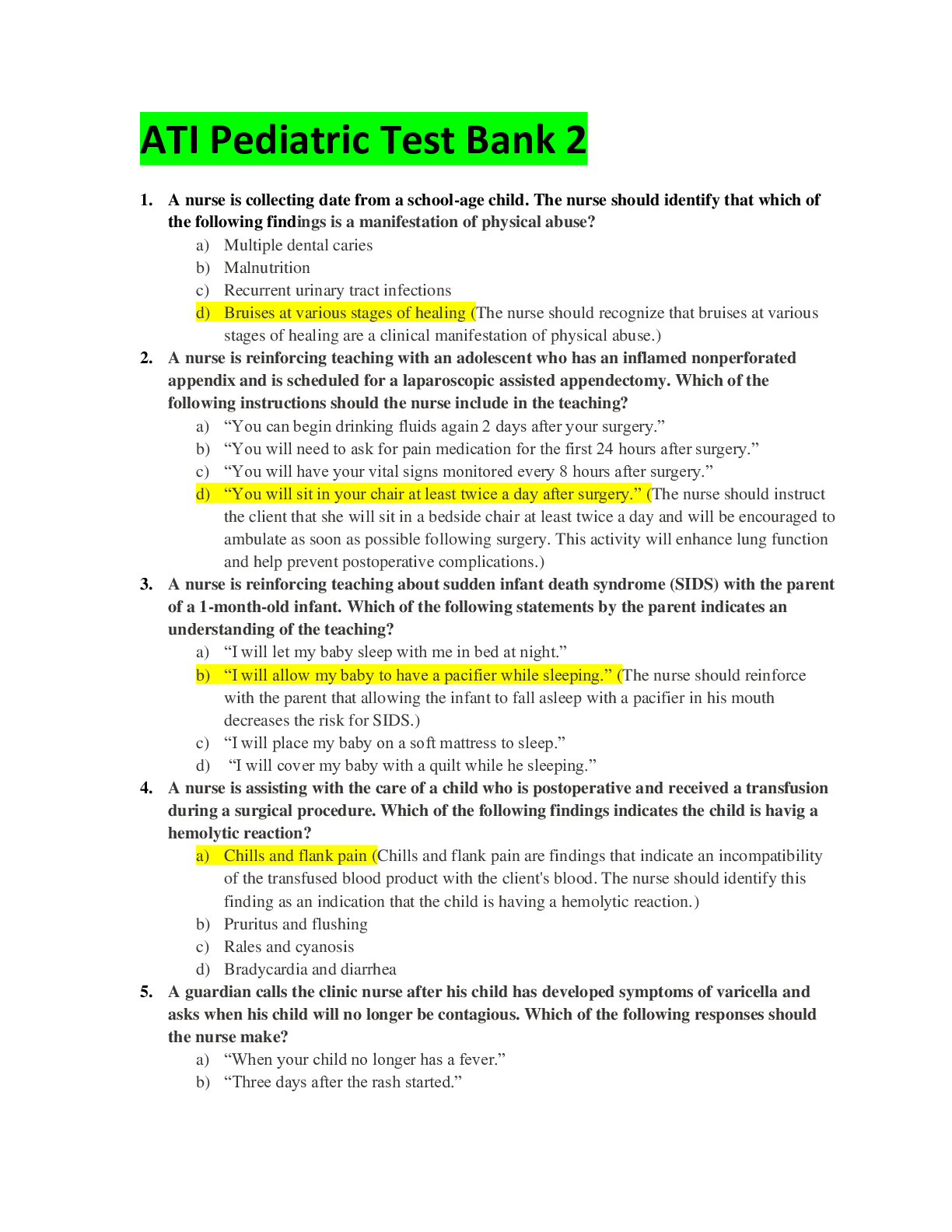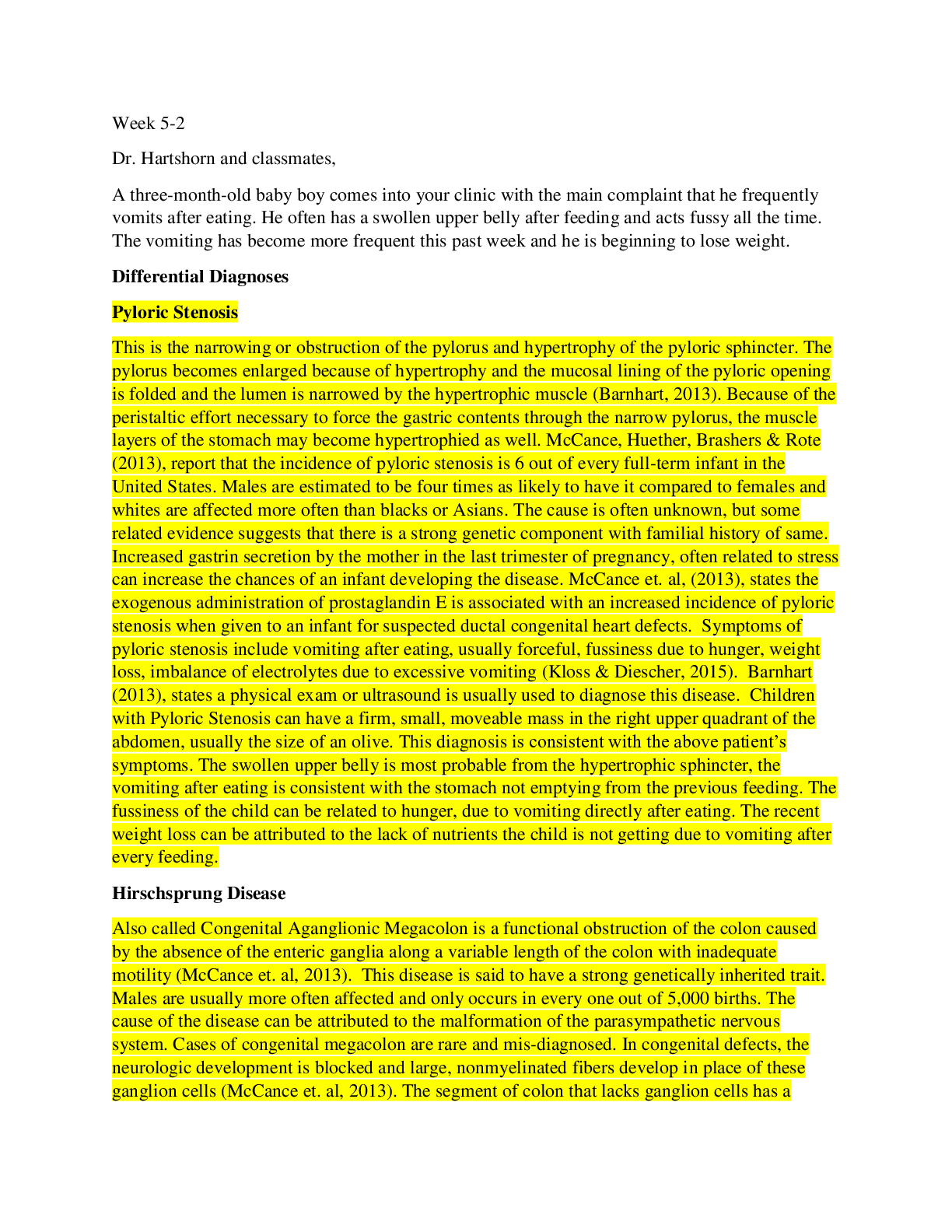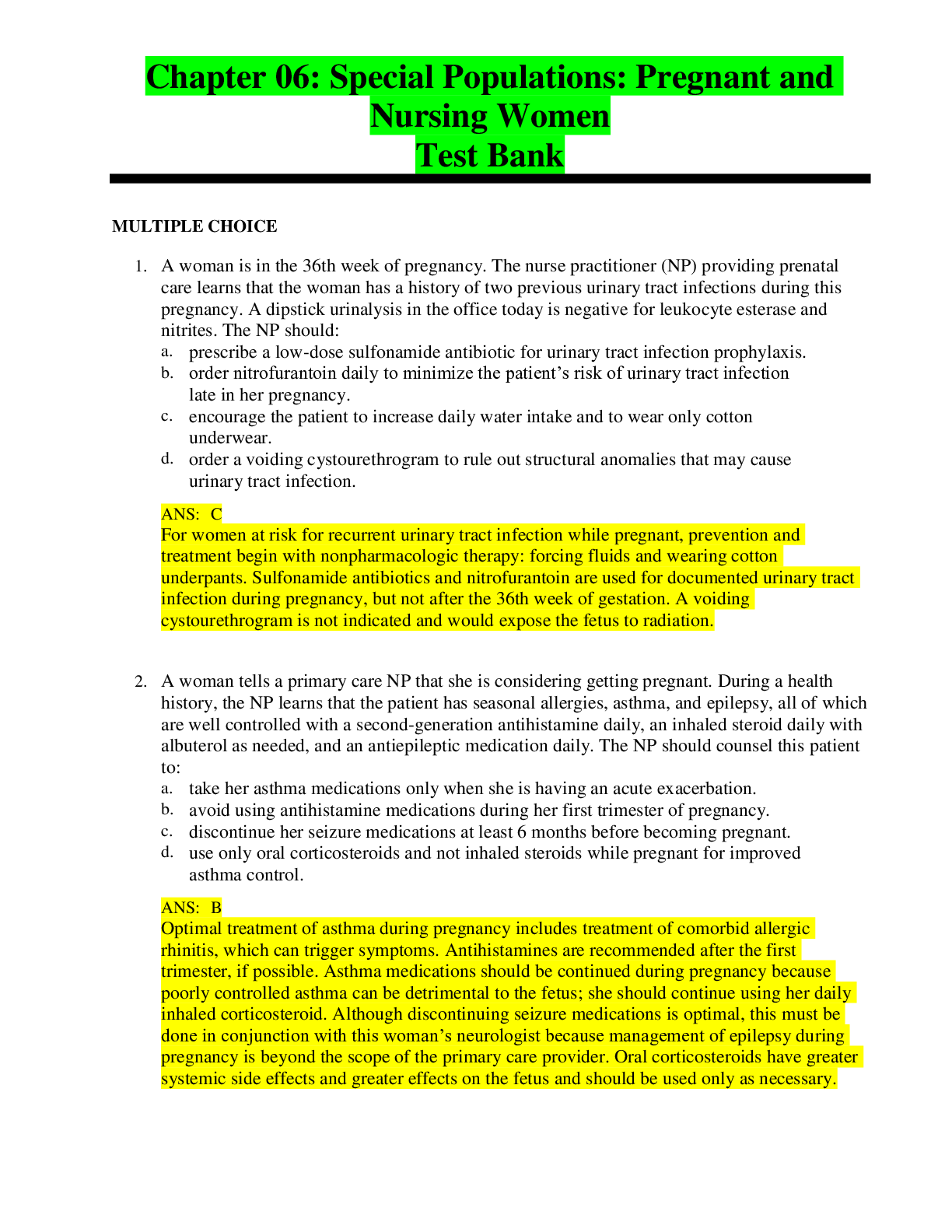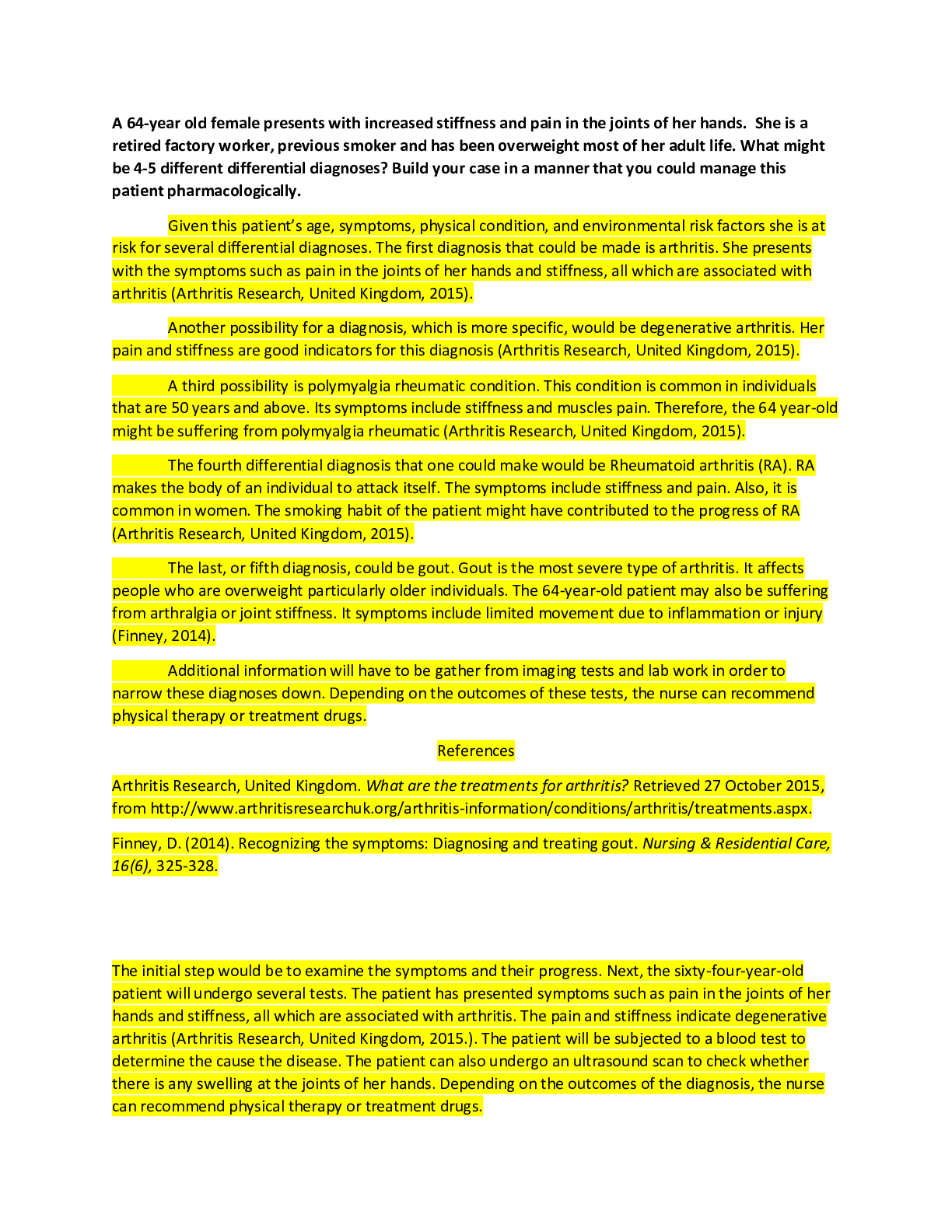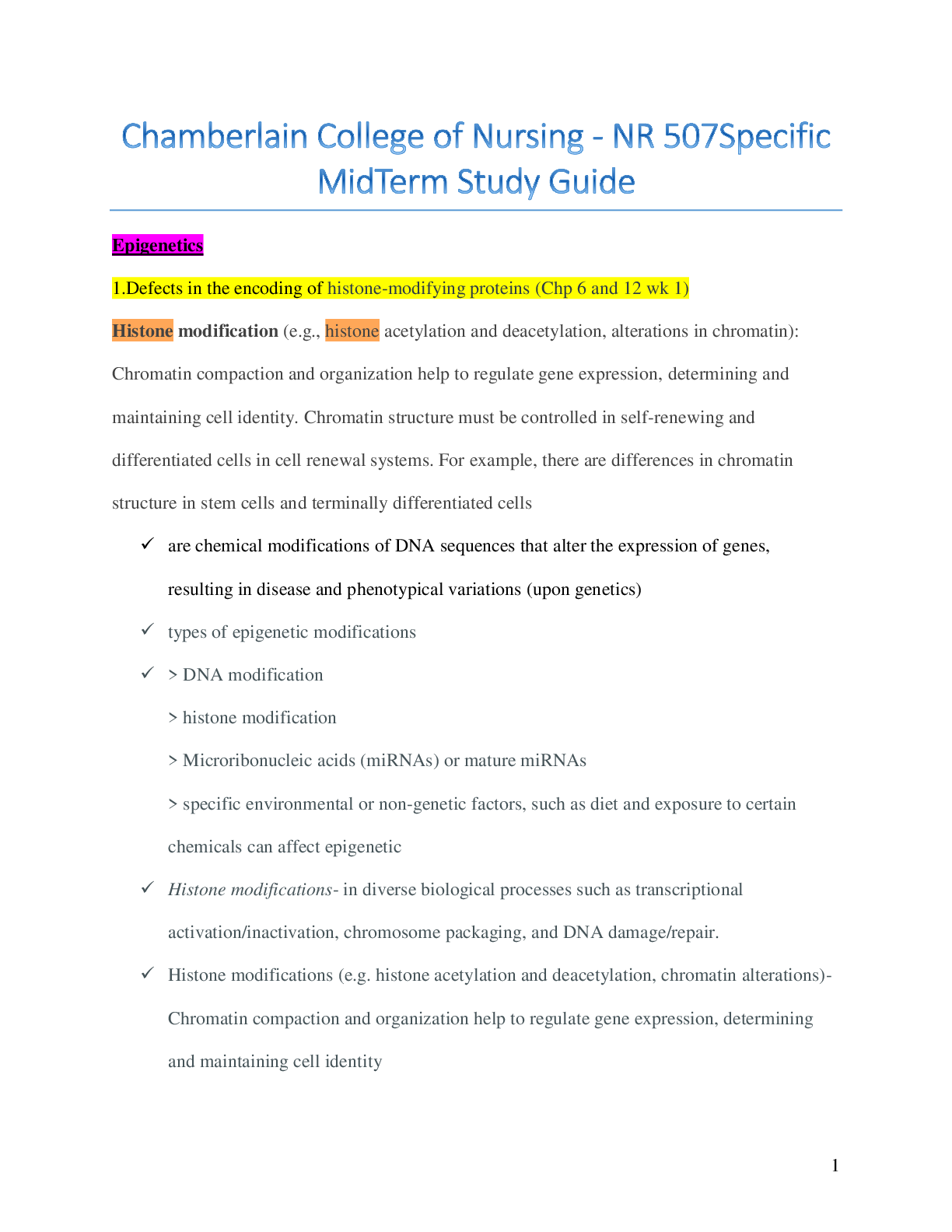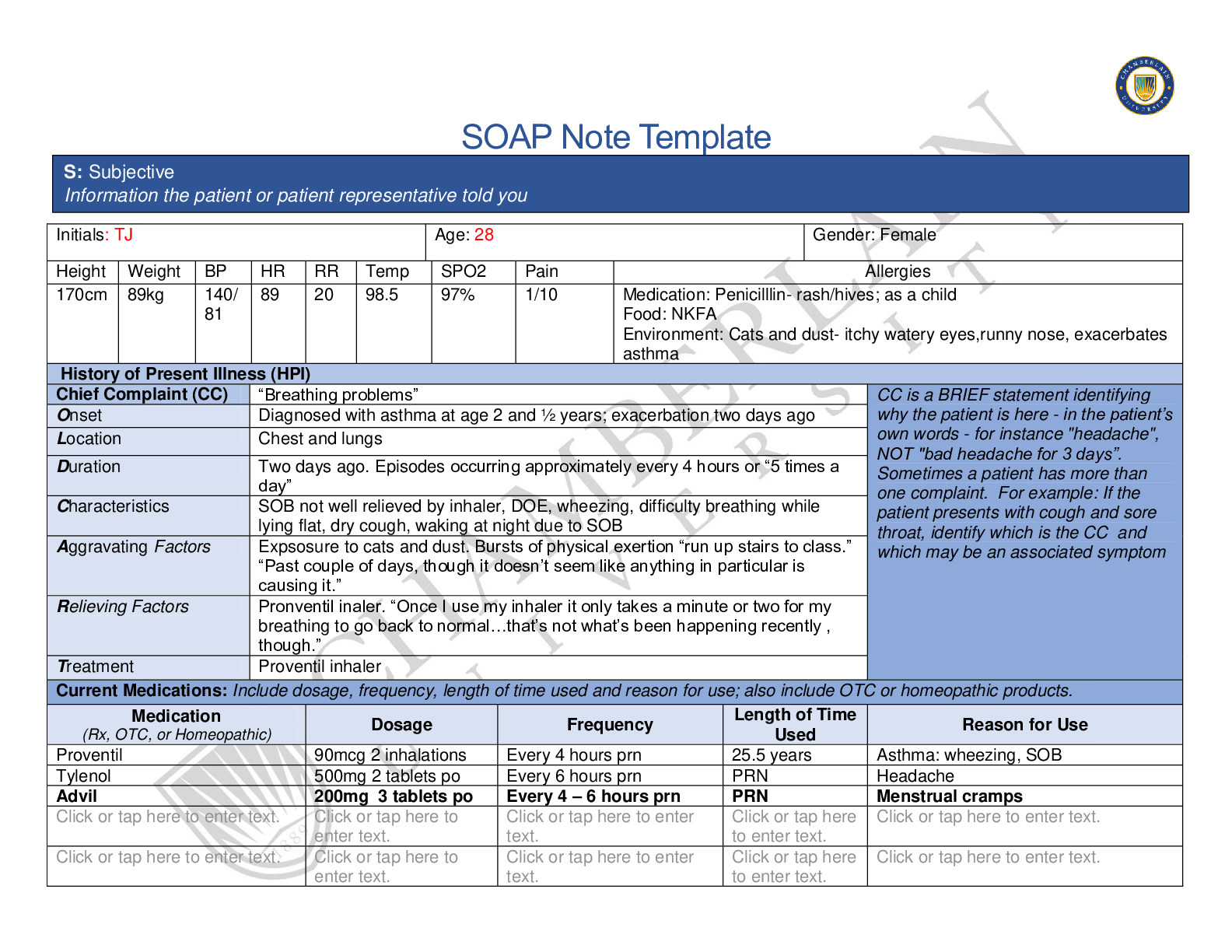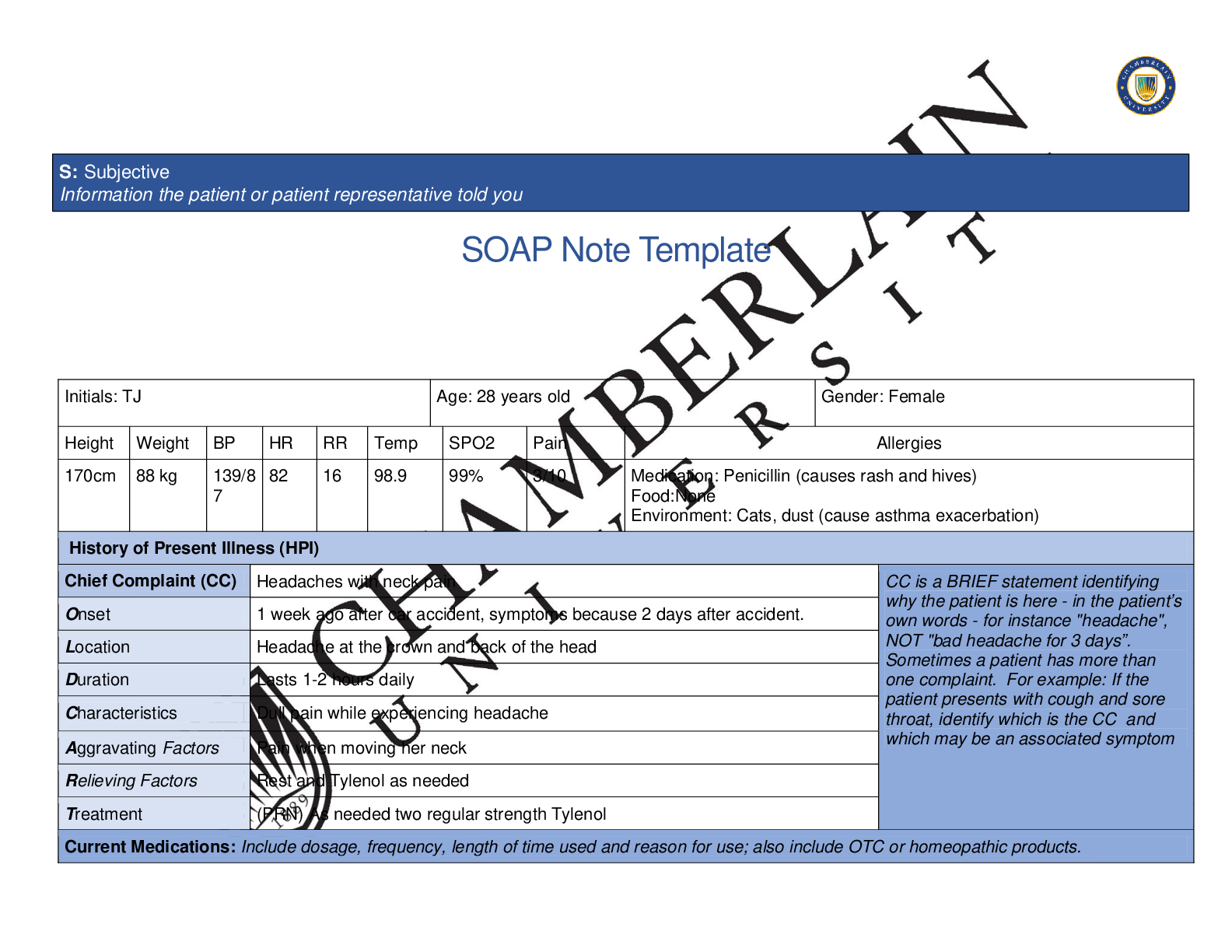*NURSING > QUESTIONS & ANSWERS > Chamberlain College of Nursing - PATHOPHYSI NR 507WK6TD2: Week 6: Dermatologic and Musculoskeletal D (All)
Chamberlain College of Nursing - PATHOPHYSI NR 507WK6TD2: Week 6: Dermatologic and Musculoskeletal Disorders - Discussion Part Two (THREAD DISCUSSION AND RESPONSES)
Document Content and Description Below
Week 6: Dermatologic and Musculoskeletal Disorders - Discussion Part Two Loading... This week's graded topics relate to the following Course Outcomes (COs). 1 Analyze pathophysiologic mechanisms as... sociated with selected disease states. (PO 1) 2 Differentiate the epidemiology, etiology, developmental considerations, pathogenesis, and clinical and laboratory manifestations of specific disease processes. (PO 1) 3 Examine the way in which homeostatic, adaptive, and compensatory physiological mechanisms can be supported and/or altered through specific therapeutic interventions. (PO 1, 7) 4 Distinguish risk factors associated with selected disease states. (PO 1) 5 Describe outcomes of disruptive or alterations in specific physiologic processes. (PO 1) 6 Distinguish risk factors associated with selected disease states. (PO 1) 7 Explore age-specific and developmental alterations in physiologic and disease states. ( Johnny is a 5-year-old Asian boy who is brought to a family practice office with a “runny” nose that started about 1 week ago but has not resolved. He has been blowing his nose quite frequently and “sores” have developed around his nose. His mother states, “The sores started as ‘big blisters’ that rupture; sometimes, a scab forms with a crust that looks like “dried maple syrup” but continues to seep and drain.” She is worried because the lesions are now also on his forearm. Johnny’s past medical and family histories are normal. He has been febrile but is otherwise asymptomatic. The physical examination was unremarkable except for moderate, purulent rhinorrhea and 0.5- to 1-cm diameter weeping lesions around the nose and mouth and on the radial surface of the right forearm. There is no regional lymphadenopathy Write a differential of at least five (5) possible diagnosis’s and explain how each may be a possible answer to the clinical presentation above. Remember, to list the differential in the order of most likely to less likely. • Based upon what you have at the top of the differential how would you treat this patient? differential diagnosis for this clinical presentation and justify it. • When would you allow the student back to school? Elaborate on your reasoning? Write a differential of at least five (5) possible diagnosis’s and explain how each may be a possible answer to the clinical presentation above. Remember, to list the differential in the order of most likely to less likely. • Based upon what you have at the top of the differential how would you treat this patient? differential diagnosis for this clinical presentation and justify it. • When would you allow the student back to school? Elaborate on your reasoning? References Baddour, L. M. (2016). In T.W. Post (Ed.) UpToDate. Impetigo. Retrieved from http://www.uptodate.com/contents/impetigo Dynamed (2015, Aug 17). Impetigo. Ipswich (MA): EBSCO Information Services. Retrieved June 5, 2016, from http://search.ebscohost.com.proxychamberlain.edu Isaacs, S. N. (2016). In T.W. Post (Ed.) UpToDate. Molluscum contagiosum. Retrieved from http://www.uptodate.com/contents/molluscum-contagiosum McCann, S. A. (2014). Structure, Function, and Disorders of the Integument. In McCance, K. L., Huether, S. E., Brashers, V. L (Eds.), Pathophysiology: The biologic basis for disease in adults and children (7th ed., p. 1636). St. Louis, MO: Mosby. Nicole, N. H. (2014). Alterations of the Integument in Children. In McCance, K. L., Huether, S. E., Brashers, V. L. (Eds.), Pathophysiology: The biologic basis for disease in adults and children (7th ed., pp. 1656, 1658, 1660). St. Louis, MO: Mosby. Shim, J., Lanier, J., & Qui, M. K. (2014). Clinical inquiry: what is the best treatment for impetigo ?. The Journal Of Family Practice, 63(6), 333-335. The Centers for Disease Control and Prevention. (2015). Hand Foot and Mouth Disease. Retrieved from http://www.cdc.gov/hand-foot-mouth/ [Show More]
Last updated: 1 year ago
Preview 1 out of 33 pages
Instant download

Buy this document to get the full access instantly
Instant Download Access after purchase
Add to cartInstant download
Reviews( 0 )
Document information
Connected school, study & course
About the document
Uploaded On
Jul 06, 2020
Number of pages
33
Written in
Additional information
This document has been written for:
Uploaded
Jul 06, 2020
Downloads
0
Views
37

